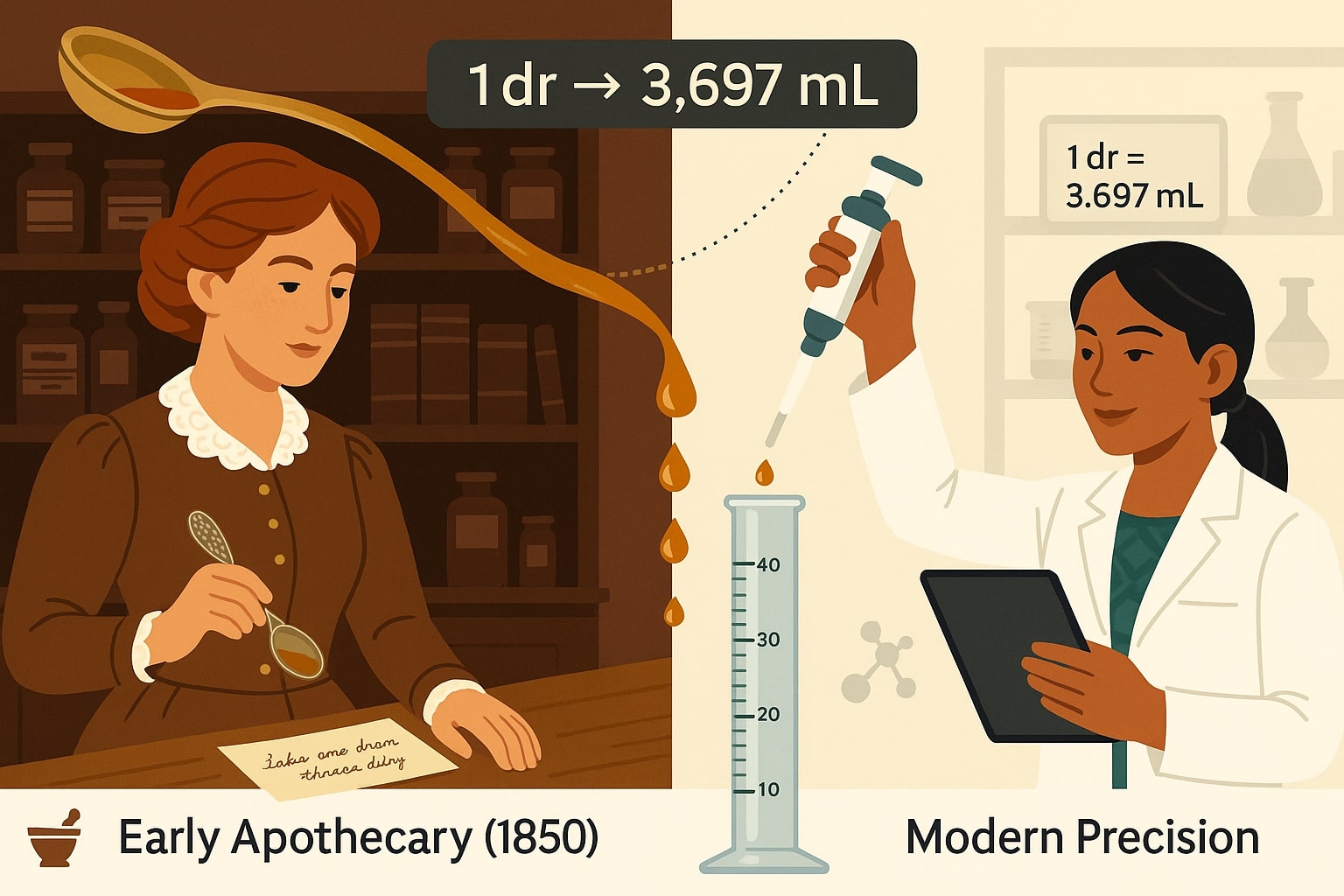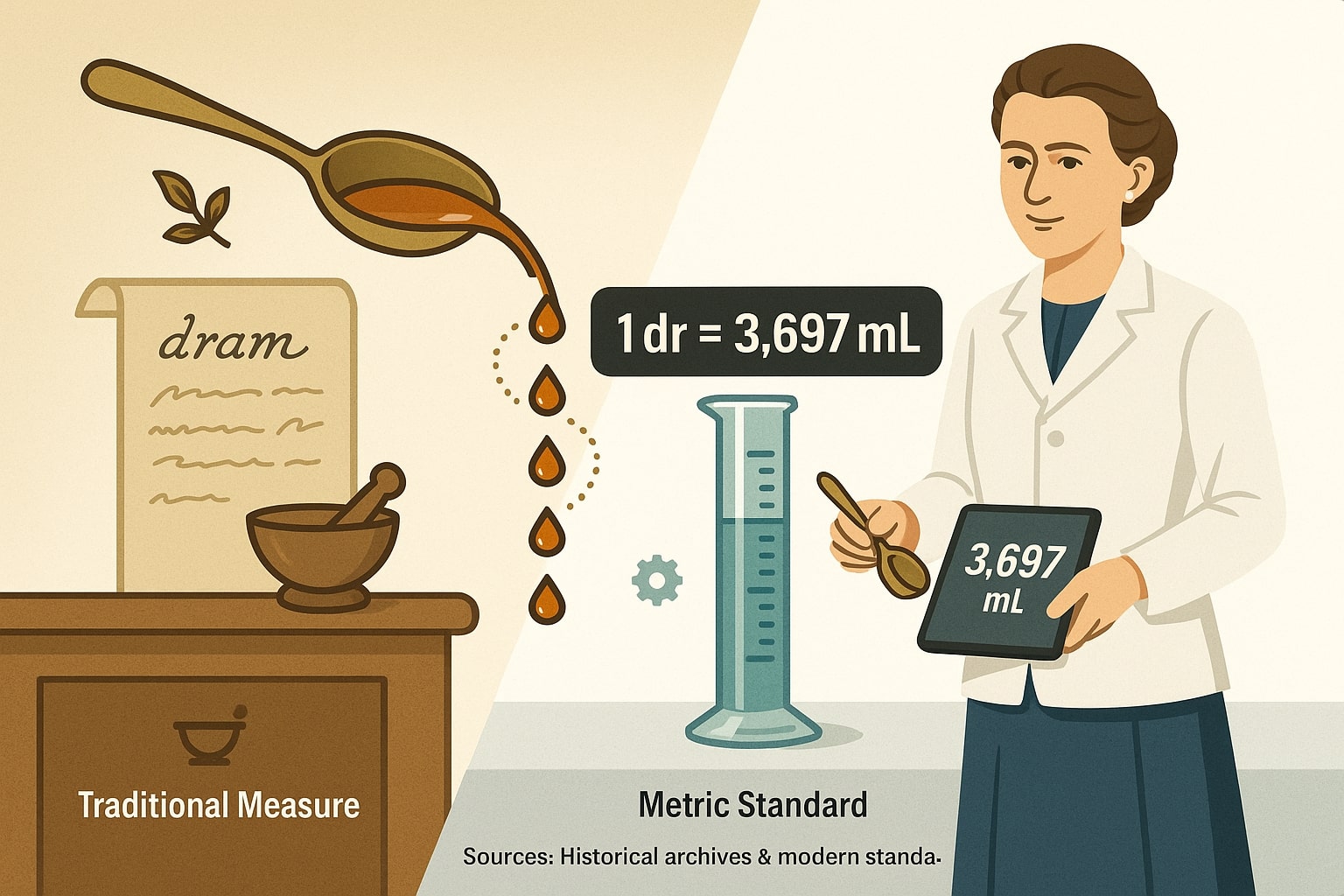Dram to Milliliter – How to convert dram to mL
Need to convert dram to milliliter? Though rarely used in everyday life today, the dram still shows up in bartending, traditional recipes, and historical texts. Most modern industries, however, use milliliters – the standard metric unit for liquids. Converting between the two is easy once you know the background and the numbers. Here’s how to do the math, plus some interesting facts about where the dram came from and how it’s still used.

What is a dram?
A fluid dram (often abbreviated as “fl. dr.”) is an old liquid volume unit, originally from the apothecaries’ system. In U.S. customary measurement, 1 fluid dram equals 1/8 of a fluid ounce, or about 3.6967 milliliters.
Historically, drams were used by pharmacists and doctors to measure medicines, as well as by bartenders and distillers. Today, you might still see it in cocktail recipes or when referring to a small “dram” of whiskey – though in casual speech, that’s more about a sip than an exact volume.
What is a milliliter (mL)?
A milliliter is a standard metric unit for volume, equal to 1/1,000 of a liter or exactly 1 cubic centimeter (cm³). It’s the standard for medicine, cooking, and consumer products worldwide.
Milliliters are now used in almost all contexts where drams once dominated, making conversion essential for anyone using old recipes, cocktail books, or historical records.
How to convert dram to milliliter
The conversion is straightforward:
1 U.S. fluid dram = 3.6967 milliliters (mL)
To convert:
Milliliters (mL) = Drams × 3.6967
Example: If a bartender needs to pour 4 drams of syrup:
4 × 3.6967 = 14.7868 mL
Rather not calculate manually? Use our Volume Converter or explore other Conversion tools for instant answers.
Did you know?
-
Medicinal history: In the 18th and 19th centuries, apothecaries used drams to dose liquid medicines, often writing prescriptions that required exact dram measurements – long before milliliters became the standard.
-
Whiskey culture: The phrase “a wee dram,” popularized in Scotland, doesn’t refer to the exact measurement, but in formal distilling terms, a dram is still about 3.7 mL – barely a sip by modern standards.
-
Cocktail revival: Some craft cocktail bars have revived old recipe books from the 1800s that list ingredients in drams, making conversions to milliliters essential for today’s bartenders.
-
Legal shift: The U.S. officially discouraged apothecaries’ units, including drams, in the early 20th century as part of a push toward metrication and the adoption of more standardized systems for medicine and trade.
The Dram’s Role in Early Pharmacy
In 1850, apothecaries across the United States relied heavily on drams for liquid prescriptions. According to historical archives from the Smithsonian National Museum of American History, handwritten prescriptions regularly instructed patients to “take one dram, three times daily.”
However, inconsistent glassware and the lack of standardized measures led to dosage problems, prompting the gradual transition to milliliters by the early 1900s. Today, the milliliter’s precision ensures that the old dram survives mostly as a cultural reference – and in the occasional vintage cocktail recipe.

Wrapping It Up
Converting dram to milliliter is as simple as multiplying by 3.6967. While the dram is a historical unit mostly tied to old recipes, whiskey lore, and apothecary traditions, knowing how it translates to modern milliliters can help when reading old texts or recreating classic cocktails.
For fast and accurate results, use our Volume Converter or explore other Conversion tools to simplify any unit conversion.

